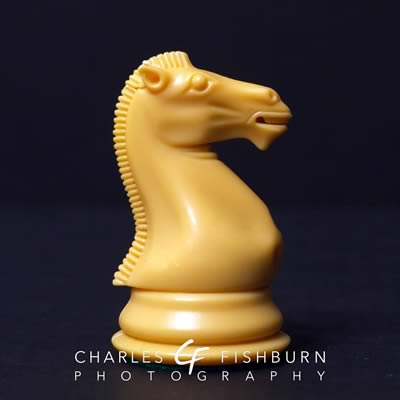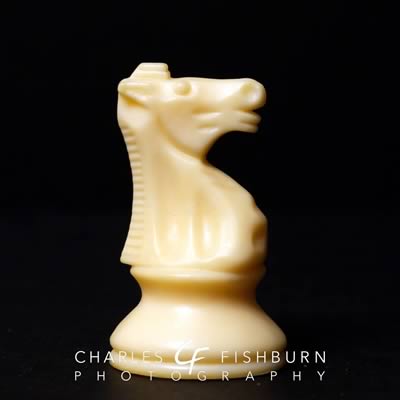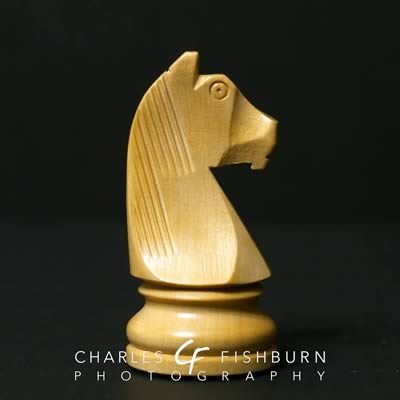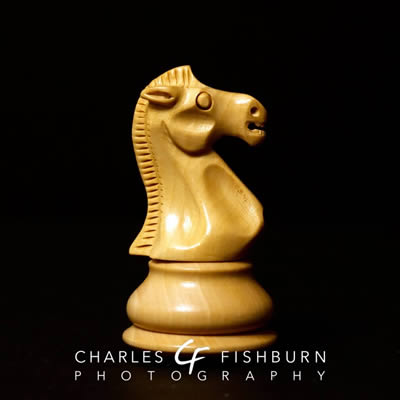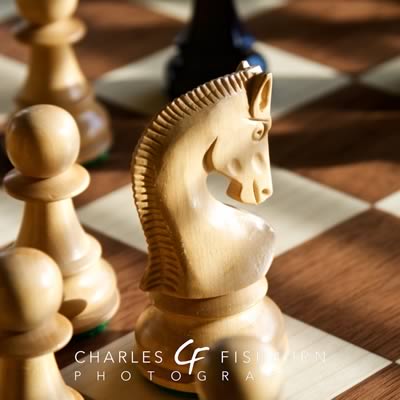
About Chess Sets
Variations of 32
If you've seen a chess set, and I say to you "chess set", you will have in your mind some concept of what you think a chess set looks like. If you've seen a "normal" chess set, then you will be thinking about a set of pieces based on what is known as the Staunton pattern. This will consist of:
- a King: the tallest piece, with a cross "finial" atop its crown;
- a Queen: the second tallest piece, slightly smaller with a crown of points;
- a Rook: resembling the tower and parapets of a castle, and which people sometimes call (incorrectly) "the castle";
- a Bishop: a medium-sized piece with a rounded and pointed top, typically with a diagonal cut to represent a bishop's mitre;
- a Knight: the distinct neck and head of a horse, and the only piece which really can't be mostly turned on a lathe; and
- a Pawn: the smallest, simplest piece with a small globe atop a small pedestal.
I say "Variations of 32" because a complete chess set is comprised of 32 pieces: 16 "white" and 16 "black", although the pieces don't necessarily need to be white or black per se. They are light and dark in some manner. Each side of 16 has one king, one queen, two rooks, two bishops, two knights, and eight pawns. But the pair of rooks or bishops or knights, or any of the eight pawns do not have to be identical to their respective counterpart(s). A set could have eight distinct pawns per side and 16 distinct pawns overall. That doesn't usually happen, so often the variations only span the six distinct pieces.
In order to use any chess set in a regulated tournament, the set must conform to this standard. But that doesn't mean that each set is identical. The pattern allows for some variation (albeit limited variation), and that variation is where artistic license comes into play, allowing for distinctions between sets. Of course, a chess set doesn't have to be created for regulation play, and artists and craftsmen can choose to make their own designs entirely irrespective of any Staunton-imposed constrictions. Since the Staunton design wasn't completely "established" until the mid-1800's, we also have older sets with their own distinctions and charms.
So within the realm of chess sets, we have numerous useful, distinct and attractive sets that conform to the Staunton pattern, and we have increasingly numerable sets that vary almost wildly. If you've seen the pewter Civil War Chess Set from the Franklin Mint, or a Simpson's chess set, you've seen examples of where creative license can run.
In general, I have little interest in the more "eccentric" sets, and no interest in the commercial, novelty sets. But I do like some sets more than others, and so I have a small, very specific collection, which I present here.
Enjoy.

